Trees come in many different varieties, shapes and sizes, and many of Britain's common tree species are easily recognisable. Purifying our air by absorbing carbon dioxide and other harmful gases, trees are vital for the health of the planet.
Trees also provide a habitat and food for wildlife, creating an ecosystem where birds, insects and other creatures can live.
Learn how to identify common tree species by their leaf shape and other characteristics with our guide to British tree identification. We also take a look at where Britain's trees grow and the best places to see them.
- best tree identification books available
- Spring blossom guide
- Famous trees of the UK
- F is for Forest Bathing: mindfulness in nature
- Britain's best forests and woodlands
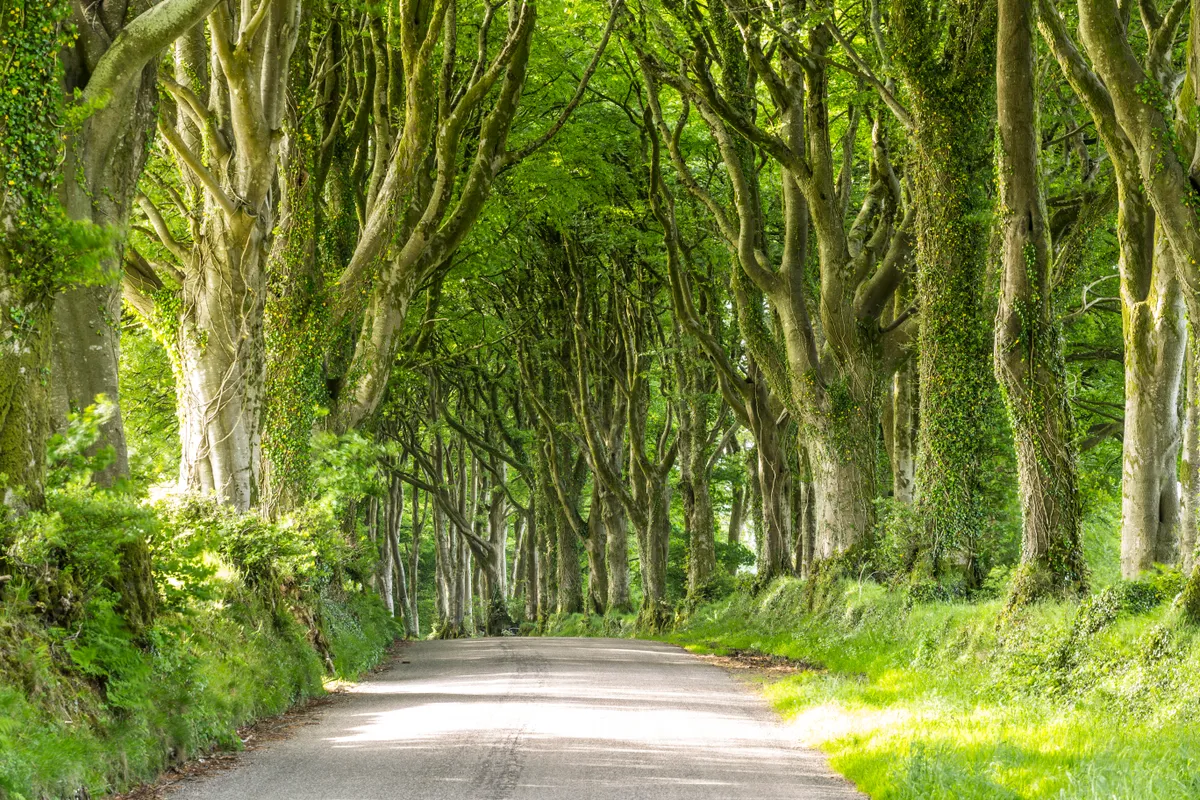
What are the most common trees in the UK?
Silver birch, oak, alder and sweet chestnut are some of the most common tree species found in Britain.
- Oak tree guide: how long they take to grow, UK species and how to identify?
- Aspen tree guide: identification, distribution and folklore
- Juniper tree guide: identification, heritage and uses
How to identify British trees
Horse chestnut, Aesculus hippocastanum
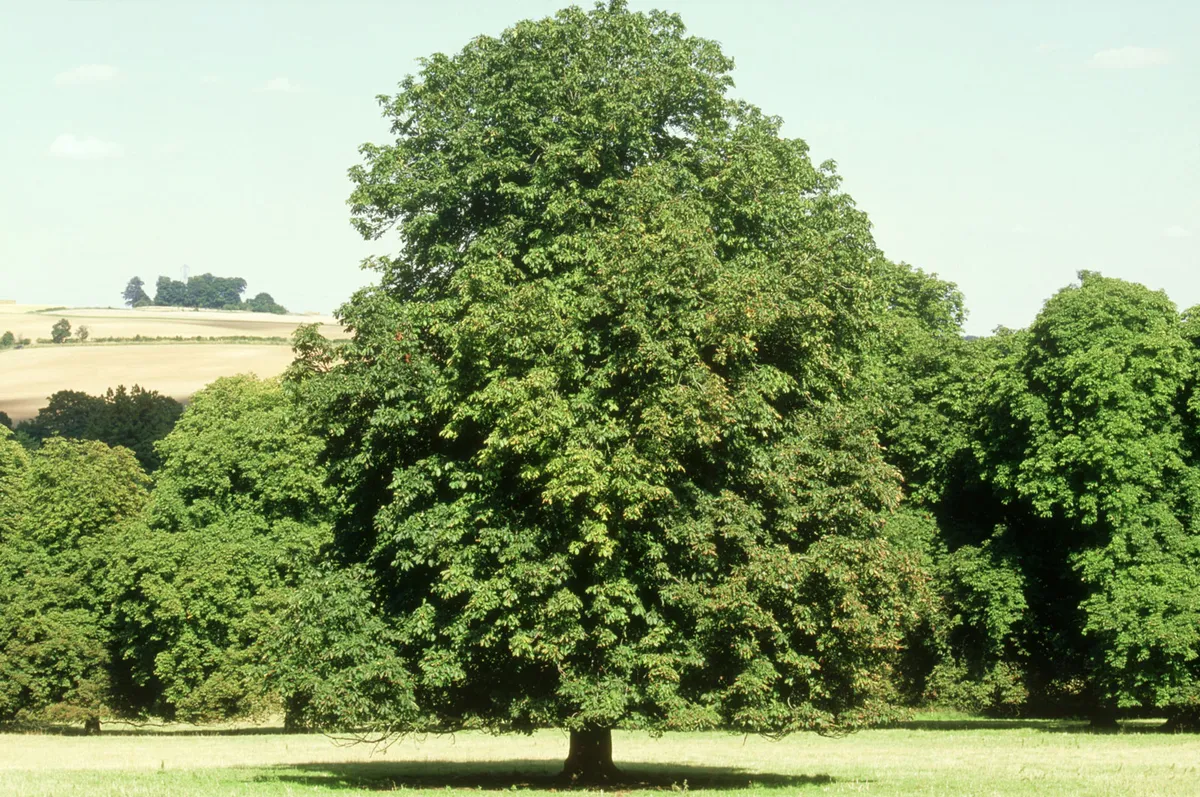
The leaves of the horse chestnut appear early in spring, unfurling like the hand of a giant whose great fingers straighten in response to the warming sun. In May, the branches bow beneath candle-like pyramids of white flowers. The tree is not native, but still it is entwined within our culture – not least in autumn, when children search so eagerly for its fallen treasures.
Introduced from the Balkans in 1616, the horse chestnut’s large seeds entered folk tradition when the game of ‘conkers’ became popular in the 19th century. The prickly husks usually contain two lustrous, beautifully patterned seeds that soon dull when they dry. They germinate readily if sown when fresh.
Where to see: parks, woodlands and countryside
Hazel, Corylus avellana
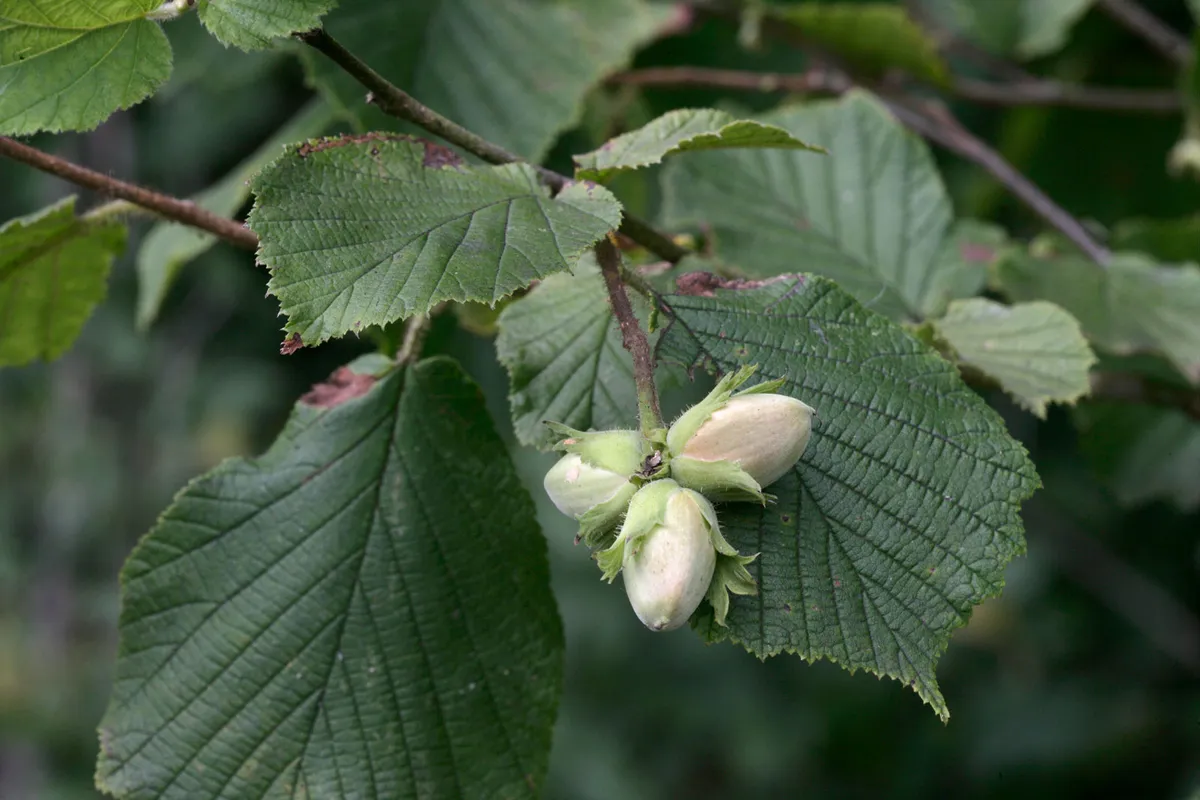
Hazle are perhaps best known for two things: their catkins and their nuts. In February, the catkins hang fluffy and limp, attracting bees to thier amber spirals. The flowers, once fertilised, will begin the gradual transformation into the nuts with which we are so familiar.
Borne in clusters, hazelnuts have edible kernels inside hard-shells that are prized by hedgerow foragers (although small mammels often reach them first). Wood mice nibble a circular hole in the nut, squirrels split it neatly in half vertically, bank voles gnaw off the pointed end.
Left alone, the hazel may survive for a relatively short 80 years, but coppicing encourages growth for many hundreds more.
Where to see: scrub and hedgerows
Common Alder, Alnus glutinosa
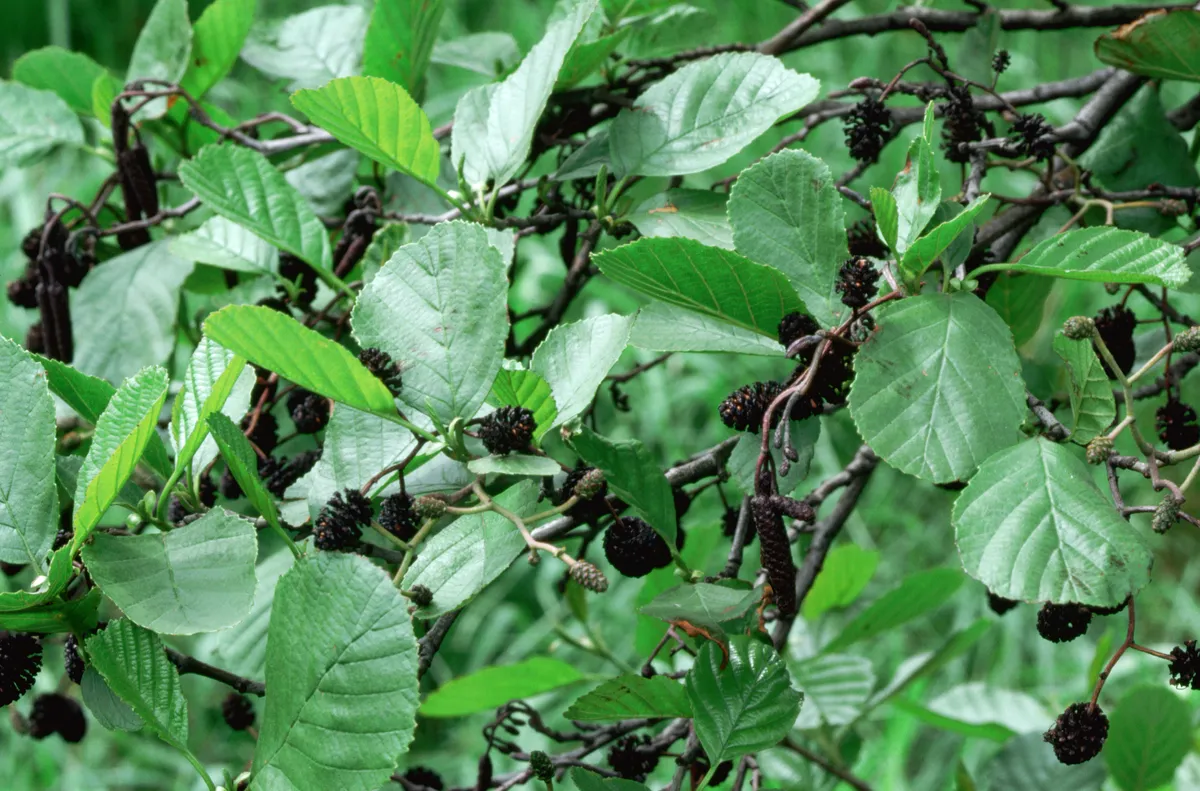
The alder is not a large tree, nor does it live for particularly long, but it has a fondness for water that few other trees can match.
In March, the catkins of the alder are maturing from claret to yellow and, once pollinated, the smaller female flowers harden like miniature pine cones. They remain on the tree until long after the rounded leaves have fallen.
Alder’s small winged seeds, which ripen inside black globular cones, are important food for small finches in autumn. Alder is a riverside tree, so vast quantities of buoyant seed are carried by floodwater and washed ashore on muddy banks that provide the moist conditions needed for germination.
Where to see: along river banks, fields, near water
Hawthorn, Crataegus monogyna
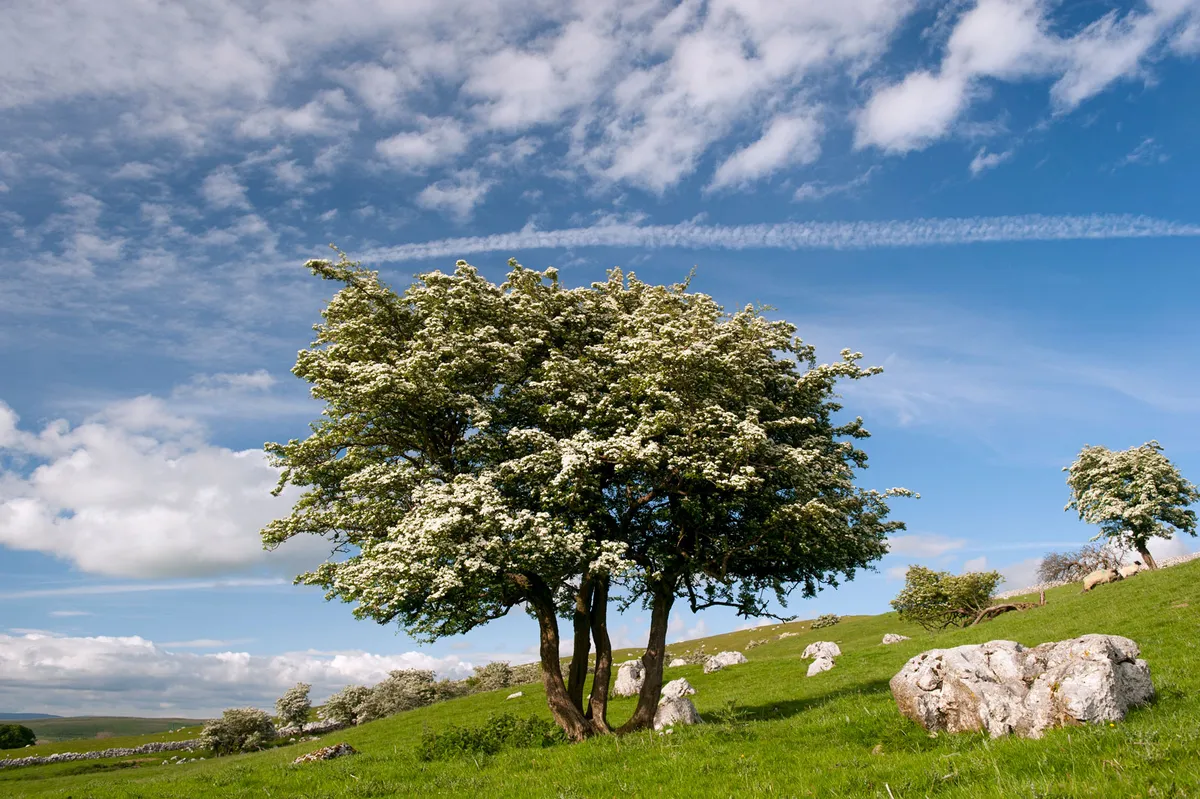
Though a single tree may grow to 12m (40ft), hawthorn is most often found tightly packed in our hedgerows. Its dense, fast-growing branches have long been recognised as a perfect natural barrier, and some 200,000 miles of hawthorn hedges are estimated to have been planted during the 18th and 19th centuries.
In spring, when hawthorn trees are full of white blossom, they are prime avian real estate. The twists of fissured bark and stiffened, unyielding thorns create perfect nesting habitat for small birds.
Almost as soon as they unfurl, the deep-lobed shiny, green leaves will be alive with caterpillars - many moth species are almost wholly dependant upon the hawthorn.
Where to see: commonly found in hedgerows, woodland and scrub.
Silver Birch, Betula pendula
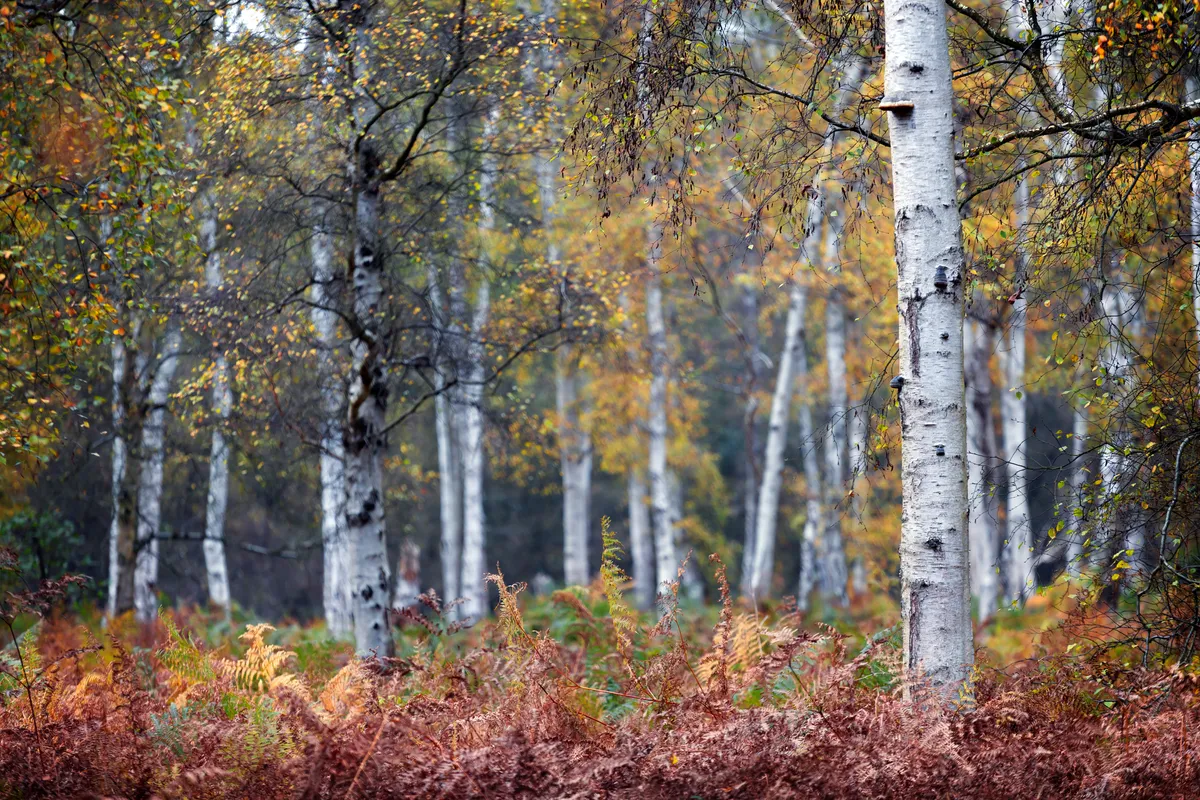
On a dank winter day, the trunks of the silver birch shimmer through the mist like the stretched ghosts of old foresters. And even in summer, with the tree in full leaf, the trunk remains distinct. The leaves of a birch are small but vibrant, bright green emeralds glistening against grey. They still hold their colour in August, and remain sparse, allowing plenty of light to reach the forest floor.
As the leaves begin to brown and fall, finches fill the branches to feed upon the tiny winged seeds.
Where to see: Mixed woodlands
Elder, Sambucus nigra
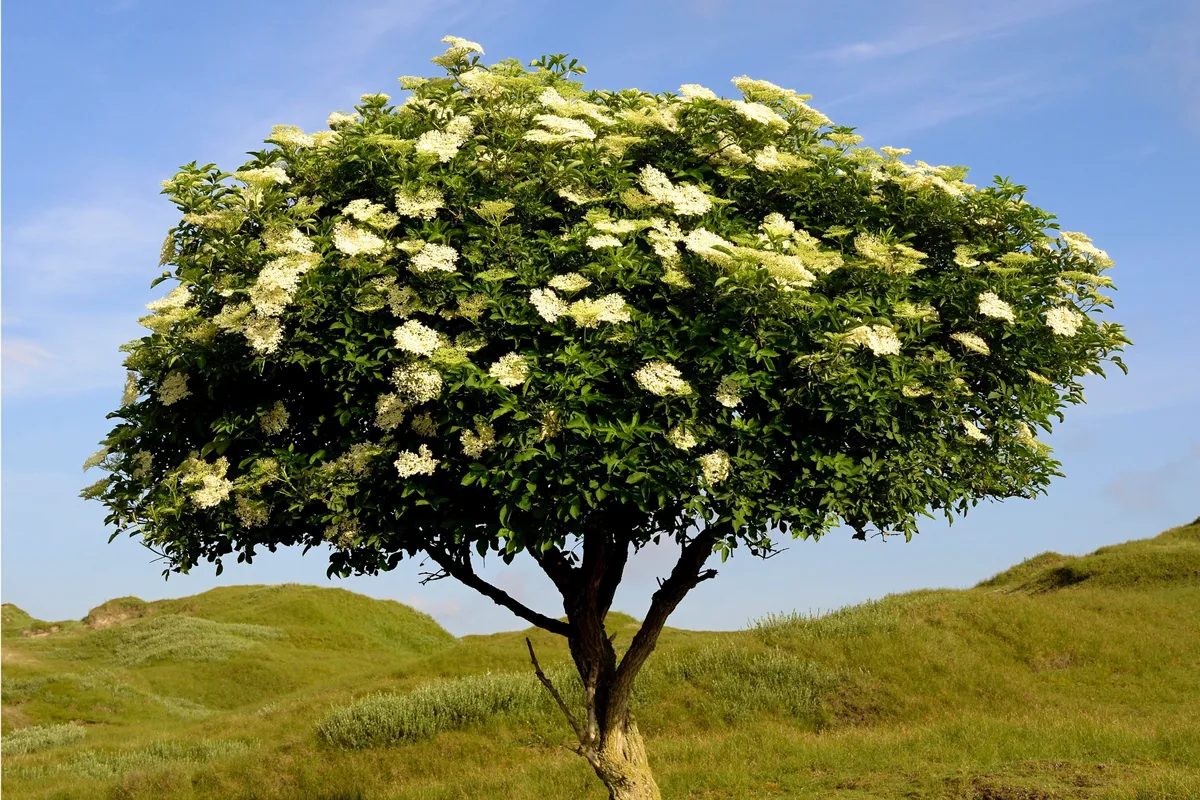
In June, the elder is at its finest, its leaves almost lost beneath the white of its flowers. The petals are small and clustered, but form an umbel that is broad and soporifically scented, like a dollop of perfume-infused, inflorescent ice-cream. By August, the pollinated flowers that remain will have transformed into berries that ripen from green to deep claret.
It was once believed that the elder tree had the power to render useless the evil spells of a witch. As a result, trees would be planted at gateways and in gardens, with whole hedgerows encircling the homes of the most superstitious.
Where to see: woodlands, parks and gardens
Oak, Quercus robur
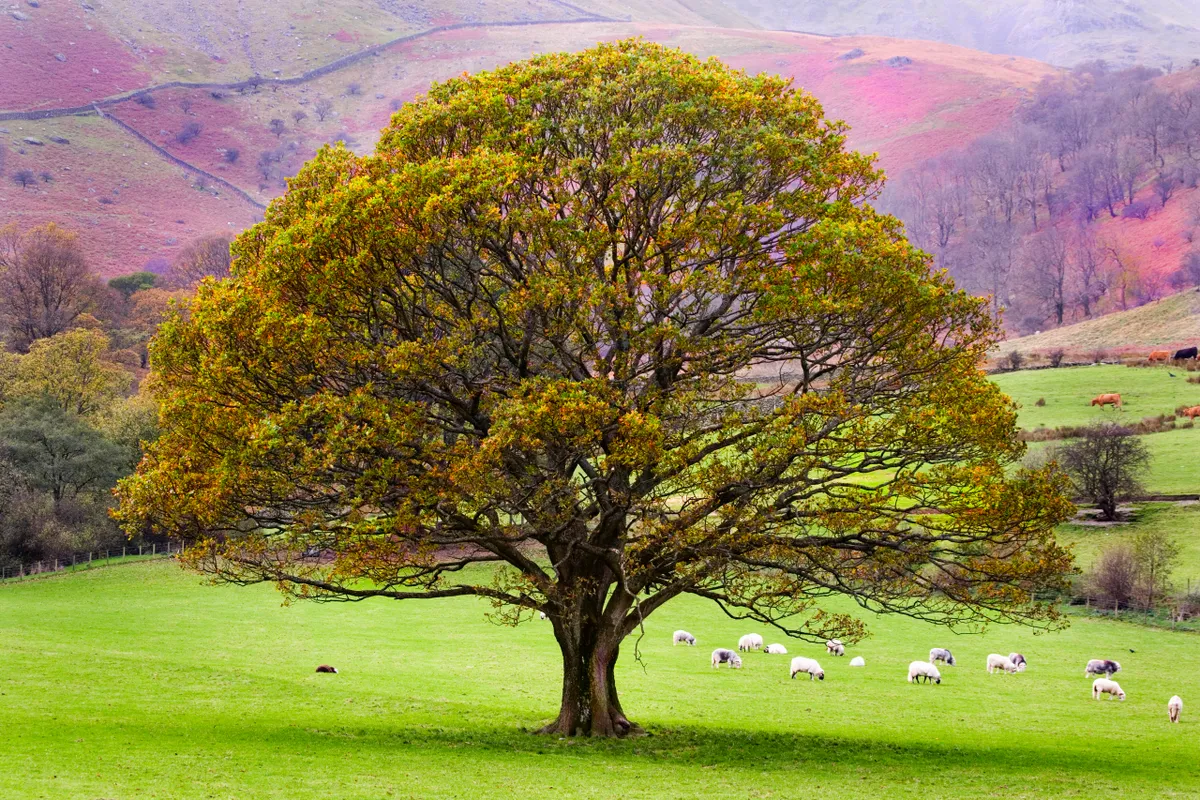
Despite the fact that it may stand for a millennium, the oak is a surprisingly fast-growing tree. From a sapling, it may spend 100 years reaching impatiently for the sky, before easing into maturity and spreading itself outwards rather than up.
The leaves have distinctive rounded lobes and, though small, are robust and feel almost as if formed from fabric. They carry their deep green late into the year by which time the acorns are just beginning to brown.
Where to see: parks and woodland
Common lime, Tilia x europea
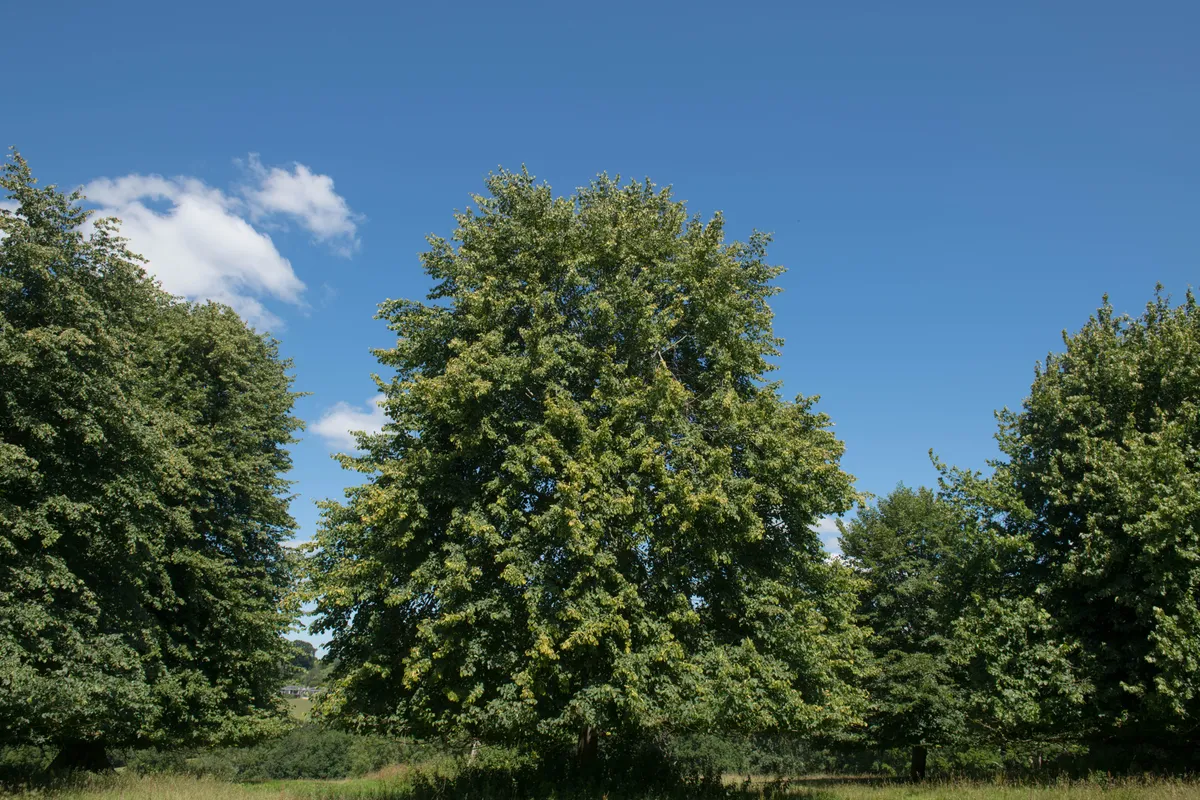
The petals of lime are somewhat more unassuming. Though tinged with yellow, they hide themselves beneath the flat, heart-shaped leaves and all but vanish into green. Bees find the flowers irresistible, and the buzz of insects is almost as intense as the fragrance. A tree might live for five centuries, and they are often grown for commercial use.
In Europe, the lime has long been associated with fertility, and was often planted in France after battles as a symbol of liberty.
Where to see: commonly found in parks and along residential streets.

